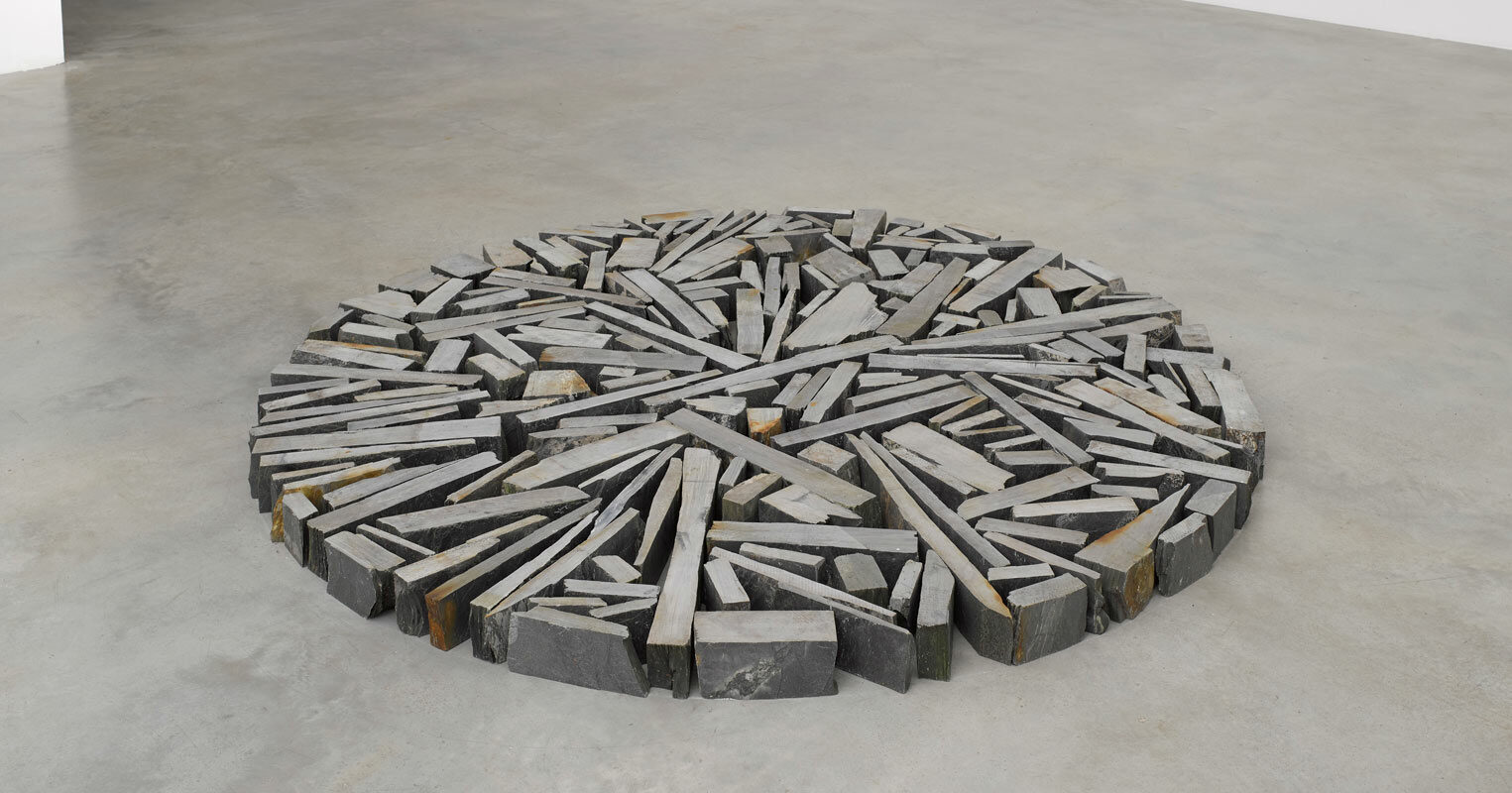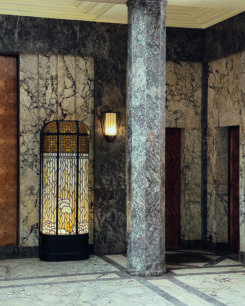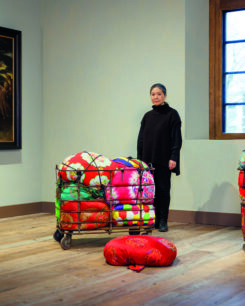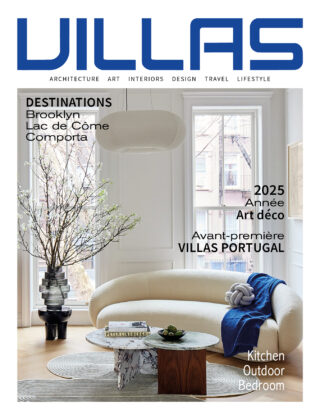Sommaire
Iconic art once again the subject of an exhibition in a cultural Mecca
In the centre of Leuven, the Museum of Fine Arts or M Museum has been selected to host a lustrous exhibition as part of the BOUM! festival, which brings together art and science. A tribute to the Big Bang theory, written in Leuven at the beginning of the 20th century.
Winner of the Praemium Imperiale, the equivalent of the Nobel Prize for the arts in Japan, and holder of the Turner Prize (an award with worldwide repercussions organised each year by the Tate Britain), Richard Long has long since been elevated to the star system. This undisputed protagonist on the international contemporary art scene has always followed his own path, one that has led him since the beginning to link nature and culture. This earned him a reputation first among art patrons and professionals and then among the general public.
Each of Richard Long‘s works is first and foremost the result of his long, solitary walks in nature. Although he has created monumental sculptures, his artistic practice is above all a way for the artist to connect personally with the environment and to listen to it. This results in the production of forms that are always geometric and simple. Bases of lines, circles, spirals and crosses that form monumental ensembles and evoke the natural landscapes that the artist travels wanders through in an attempt to establish a dream-like conversation with them. Artefacts that are injected with “humanity”, since they are not directly produced by nature.
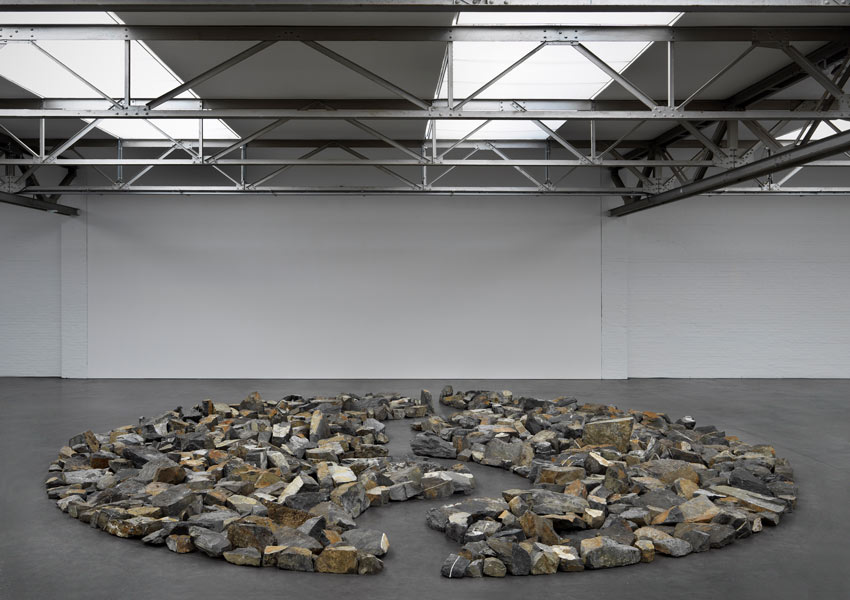
Courtesy of Richard Long | Quiet Skies Circle
Consisting mainly of XXL works and installations, often ephemeral (some are paintings and drawings made from mud for example), Richard Long’s art has been put on display in numerous international art institutions and events. Following the exhibition of his piece Richard Long March 19-22 1969, A Walking Tour in the Berner Oberland at the manifesto exhibition “When Attitudes Become Forms” (Kunsthalle Bern, Germany, 1969), it went on to tour the world. Tate Britain and the Tate Gallery in London as well as Documenta in Kassel and the Venice Biennale opened their doors to the artist in the 1970s, with Amsterdam, Berlin and New York following suit. Today, everyone has the possibility of admiring various pieces he has created in collections and exhibition parks, particularly in France, whether they are public (the National Museum of Modern Art at the Centre Pompidou in Paris and the CAPC in Bordeaux) or private (the Venet Foundation of the sculptor Bernar Venet and the Domaine de la Commanderie de Peyrassol in the French department of Var).
In Brussels, the CAB Foundation of the collector Hubert Bonnet, a great enthusiast of his work, dedicated an exceptional monographic exhibition to the artist in 2019.
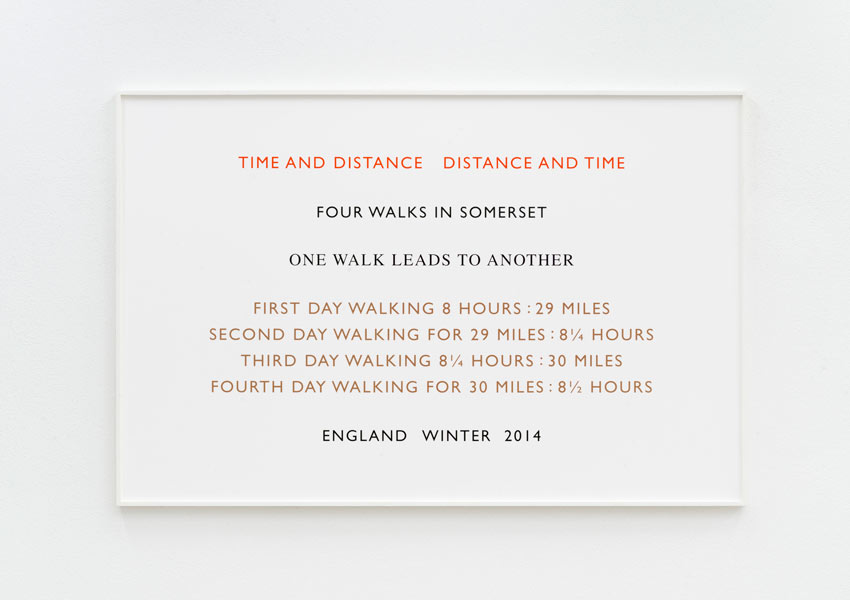
Courtesy of Richard Long & Konrad Fischer Galerie
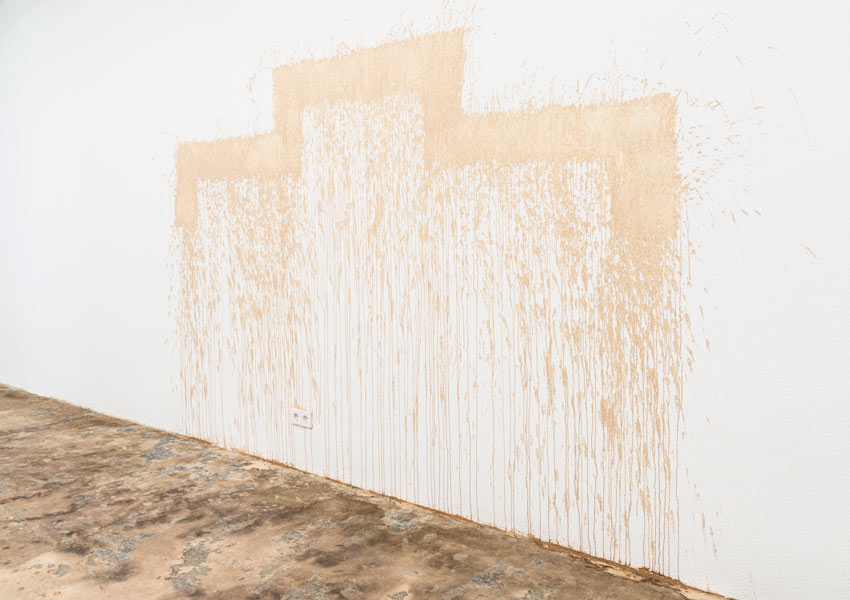
Courtesy of Richard Long & Konrad Fischer Galerie
Art and nature of an artist behind monumental sculptures that are out of this world
2021 marks the return of Richard Long to Belgium, while, concurrently, France finally sees the completion of the ambitious project of the land art artist Christo on the Arc de Triomphe in Paris. Land art, otherwise known as earthworks, is an artistic movement that is unfairly restricted to the practice of a handful of artists. In reality, it is a much broader field of exploration than a plastic art that simply consists of creation using materials from nature or taking place directly in nature. Although the British artist Richard Long has produced monumental works using rock as his main medium of expression, as an artist he has always considered himself to be separate from this growing group of artists, mainly American, such as Michael Heizer and Robert Smithson, but also Walter de Maria and James Turrell.
Although he works on the scale of the landscape in which his works unfold, except on those occasions when they are displayed in the immaculate spaces of art galleries and museum exhibition halls, Richard Long claims that he prefers to compose an intimate and personal art. This is why he considers his practice of walking to be a tool in the same way as the wooden sticks, stones, slates and feathers that he uses to conceive his site-specific interventions. Walking is the main source of his conceptual ideas, one example being: walking on an imaginary line in the middle of a field.
By working at his own pace and wherever attracts his fancy, constrained only by his long walks and the distances covered, Richard Long has left his mark all over the world: in Alaska, in the Italian Alps or even in the Sahara. To log his travels and to accompany some of his artistic installations hidden away in the middle of the wilderness, he avidly collects maps and photographs and writes texts with a distinctively poetic note. They bear witness to the traces of his journeys and his sculptures that take on an eternal value and whose aesthetic force is hailed across the board.
Leopold Vanderkelenstraat 28, 3000 Leuven
